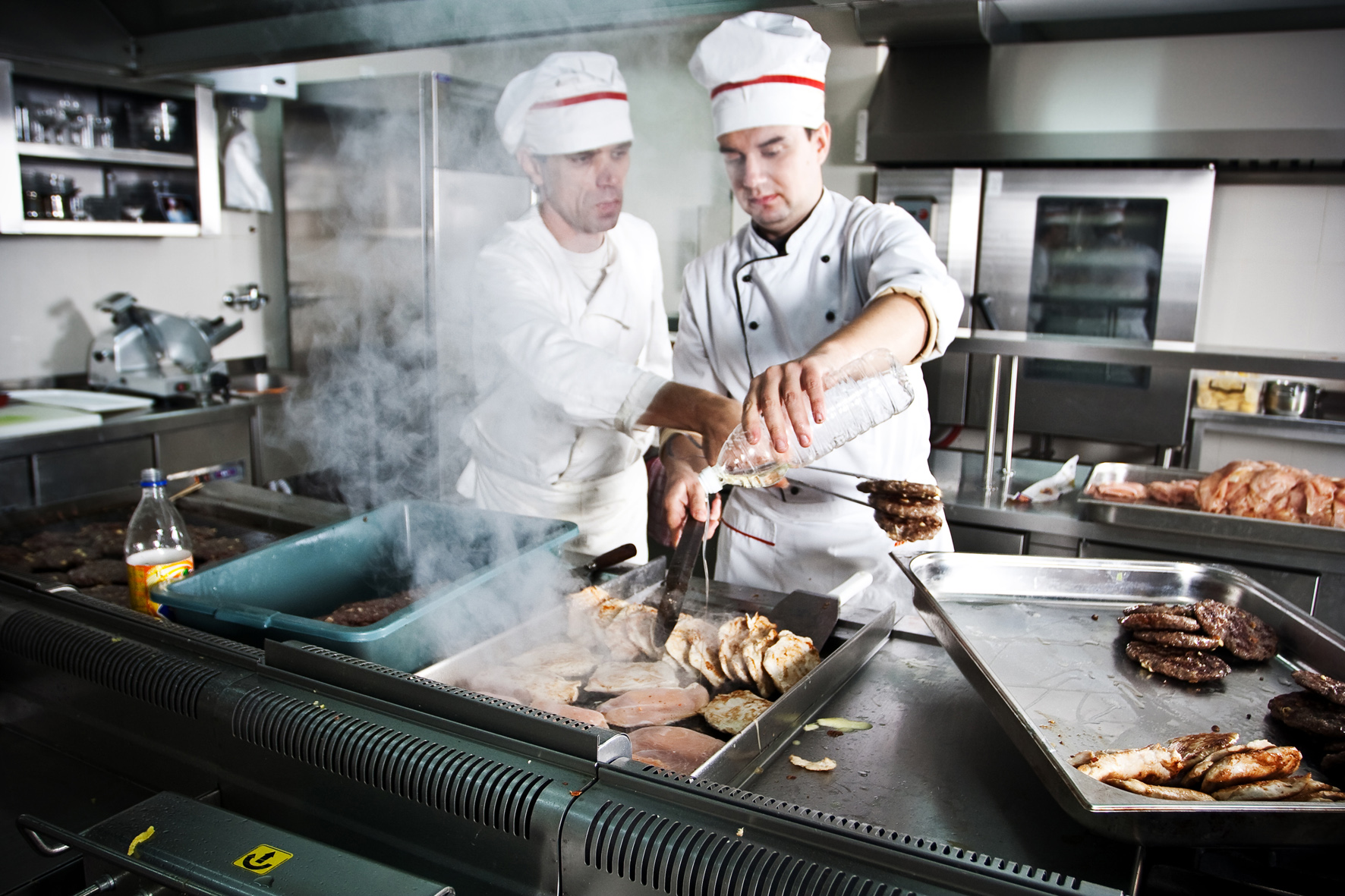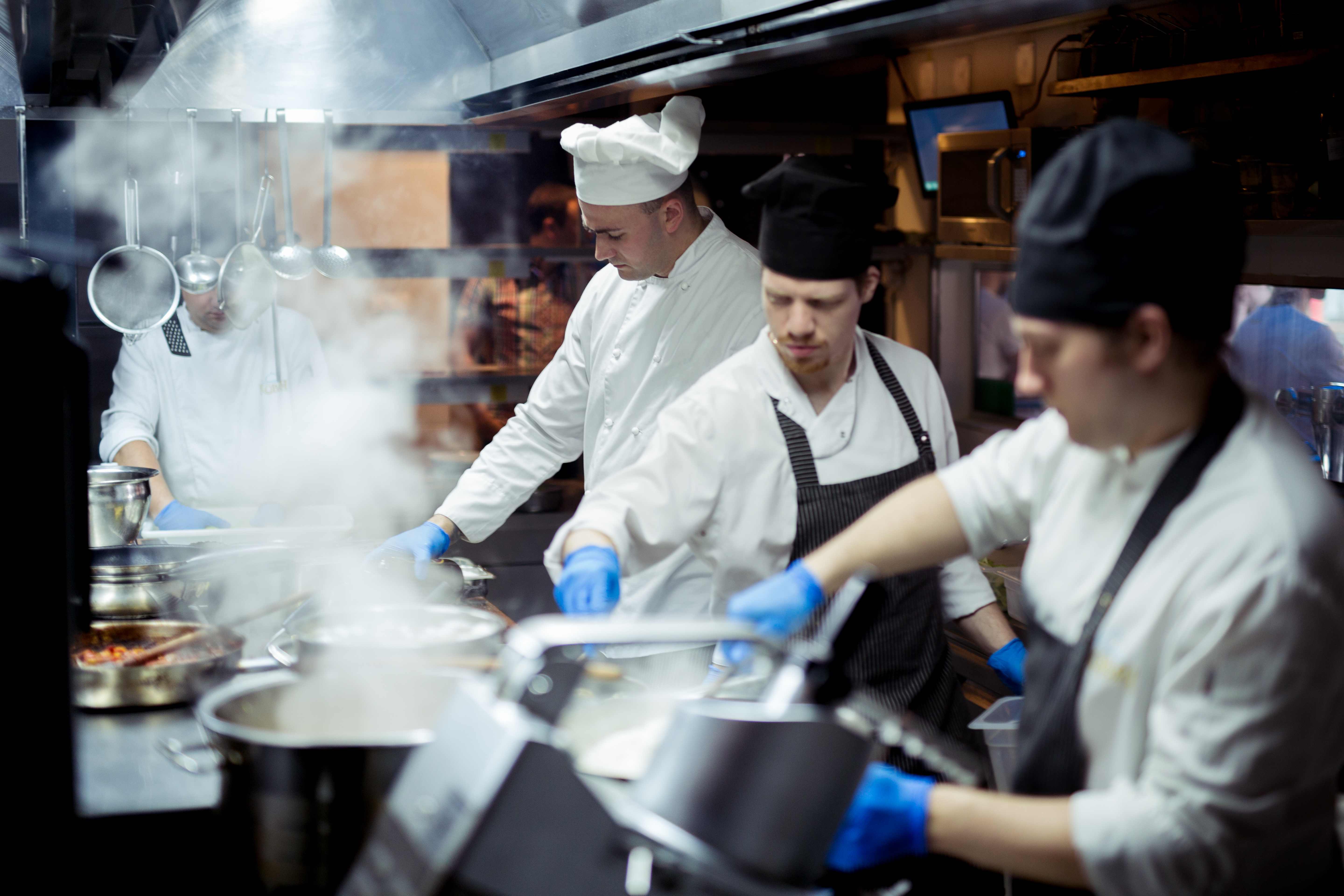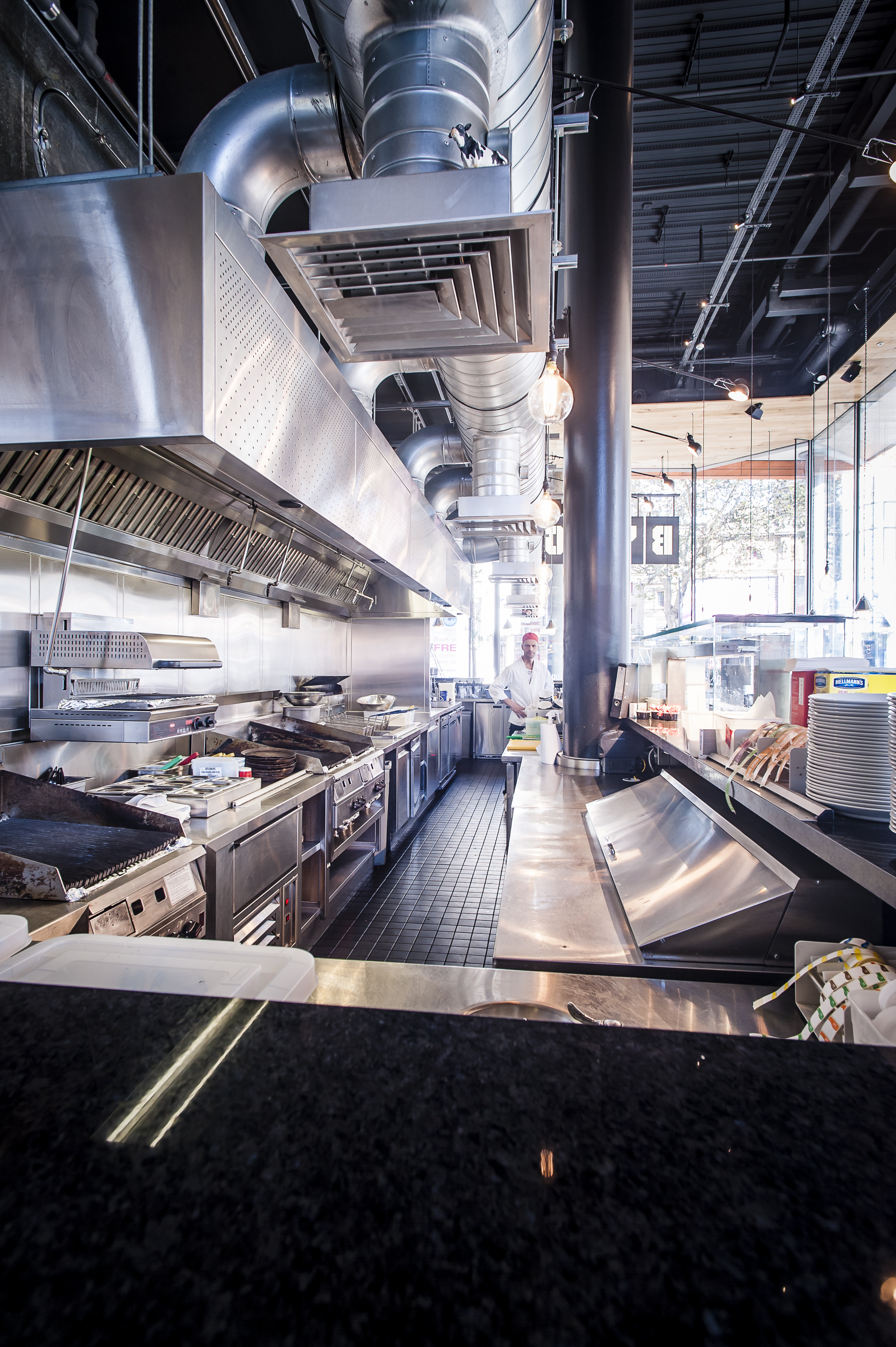Grease build-up in kitchen extract systems can be a problem for several reasons:
Proper maintenance, cleaning and use of filters can help prevent grease build-up and ensure that kitchen extract systems continue to function properly.
Odour control is a problem in kitchen extract systems because cooking generates many different odours that can be difficult to remove. Some common sources of odours in commercial kitchens include:
These odours can be unpleasant for staff and customers and can make the kitchen an unappealing place to work or eat. In some cases, it can lead to customer complaints, and in severe cases, it can lead to legal problems. Therefore, controlling and managing kitchen odours is important for customer satisfaction and employee comfort.

Heat and humidity management is a problem in kitchen extract systems because commercial kitchens generate large amounts of heat and humidity. Some common sources of heat and humidity in commercial kitchens include:
High heat and humidity can create an unpleasant environment for staff and customers as well as contribute to ideal conditions for bacteria and mould. Condensation can also lead to equipment failure and water damage.
A well-designed ventilation system that has been correctly sized, combined with regular maintenance are both important factors in avoiding these issues.

Air quality and filtration can be a problem in kitchen extract systems because commercial kitchens generate many different particles and irritants that can it. Some common sources of poor air quality in commercial kitchens include:
Poor air quality can be harmful to staff and can lead to respiratory problems such as asthma and bronchitis. It will also affect the flavour and quality of food being prepared and can also generate unpleasant odours that can be unappealing to customers.
Appropriately specified filtration, ventilation, and regular cleaning and maintenance are some ways to avoid these problems.
When designing a commercial kitchen ventilation system, there are several important factors to consider:

Scheduled maintenance and cleaning are crucial for ensuring the safety and efficiency of the system, as well as maintaining good indoor air quality. Here are some best practices for maintaining and cleaning a commercial kitchen ventilation system:
By following these simple steps, a commercial kitchen ventilation system can be maintained in good working order, helping to ensure the safety and well-being of staff and customers, whilst maintaining good indoor air quality and food safety.
It's important for kitchen operators to keep abreast of the current regulations and guidelines, and to work with experienced contractors, designers and engineers to ensure that their commercial kitchen ventilation systems are designed and maintained to meet all relevant codes and regulations. This will help to ensure the safety and well-being of staff and customers, while also helping to maintain good indoor air quality and food safety.
Proper maintenance of a commercial kitchen extract system is crucial for ensuring the safety and efficiency of the system, as well as maintaining good indoor air quality. Some key maintenance tasks that should be carried out on a regular basis include:
By carrying out these regular maintenance tasks, a commercial kitchen extract system can be kept in good working order, helping to ensure the safety and well-being of staff and customers, while also helping to maintain good indoor air quality and food safety.
Testing air quality regularly is important in a commercial kitchen environment because it helps to ensure that the ventilation system is functioning properly and that the indoor air is safe and healthy for staff and customers. Some reasons why testing air quality regularly is important include:
Regular air quality testing is a crucial part of maintaining good indoor air quality and the safety of everyone in the commercial kitchen environment. It should be conducted by professional or certified personnel and based on regulations and guidelines, to be able to properly measure and evaluate the air quality and make sure to take necessary steps to improve it.
Woods Air Movement offers a range of solutions for kitchen ventilation projects from concept and design through to servicing and maintenance. To find out more get in touch today.